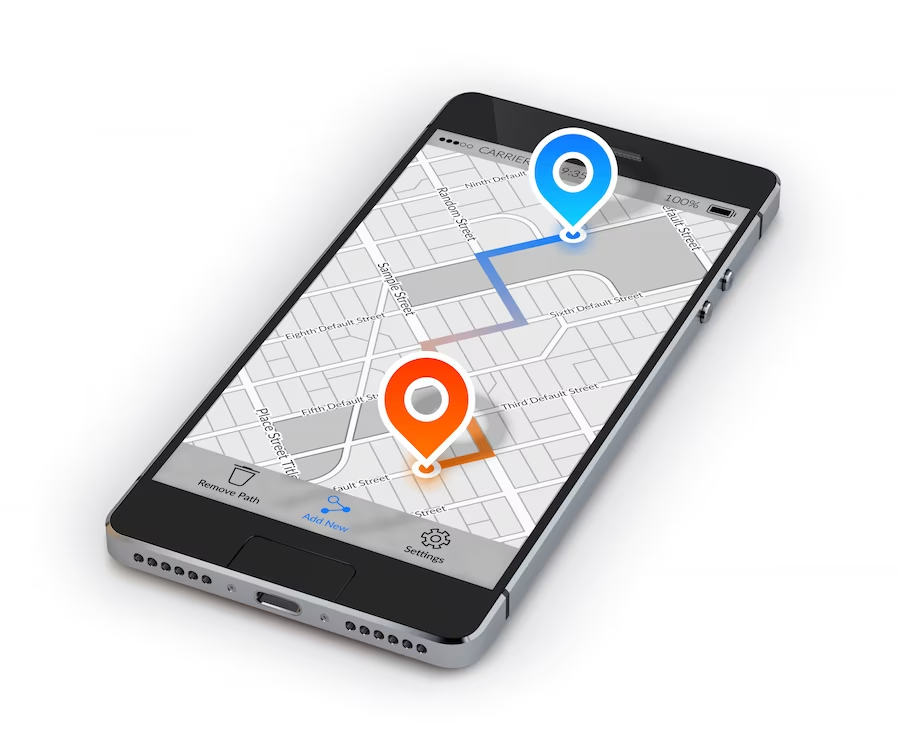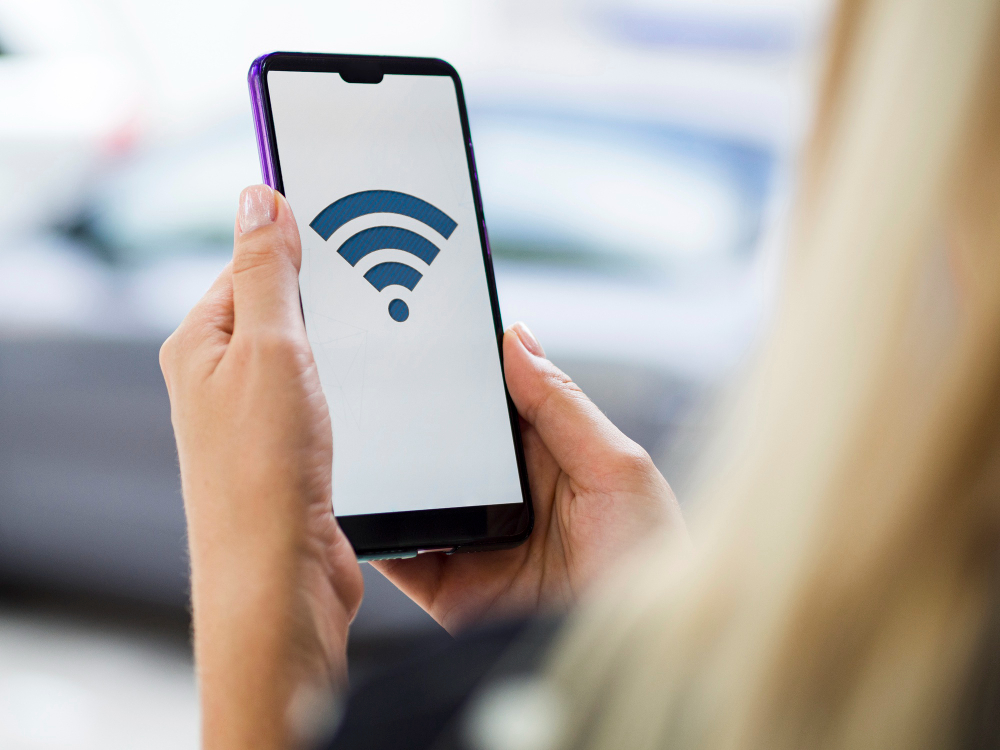Imagine you’re trying to locate a friend or family member who’s not answering their phone. Or perhaps you’re worried about the safety of your child, partner, or employee. In situations like these, knowing how to track someone’s location with just a phone number can be useful. But is it legal? How does it work? And what are the best methods to use? This guide will answer all those questions and more.

Introduction to tracking someone’s location with a phone number
Tracking someone’s location with a phone number might seem like something that only spies and hackers can do. But the truth is, it’s not as complicated or mysterious as it sounds. In fact, there are several ways to do it, depending on the type of phone and the information you have. Before we dive into the methods, let’s clarify a few things.
First, it’s important to understand that tracking someone’s location without their consent can be illegal, depending on the circumstances. If you’re doing it for malicious purposes, such as stalking, harassment, or identity theft, you can face criminal charges. However, if you’re doing it for legitimate reasons, such as finding a lost phone, checking on a loved one’s safety, or monitoring a company vehicle, it can be legal. In any case, it’s always better to err on the side of caution and seek legal advice if you’re unsure.
Second, it’s worth noting that tracking someone’s location with a phone number is not foolproof. There are many variables that can affect the accuracy and availability of the data, such as the phone’s battery life, network coverage, and privacy settings. Moreover, some methods require access to the phone itself, while others rely on third-party services or software. Therefore, you should not rely solely on phone tracking as a means of surveillance or control, but rather as a tool to complement other sources of information and communication.
How does phone tracking work?
To understand how to track someone’s location with just a phone number, it’s helpful to know how phone tracking works in general. There are three main methods of phone tracking: GPS, cell tower triangulation, and Wi-Fi. Each method has its strengths and limitations, and some phones may use a combination of them depending on the situation.
GPS stands for Global Positioning System, which is a network of satellites that transmit signals to GPS receivers on the ground. By measuring the time and distance of the signals, the GPS receiver can calculate its location with high accuracy, usually within a few meters. Most smartphones today have built-in GPS chips that can be used for navigation, fitness tracking, and location-based services. However, GPS tracking requires a clear view of the sky and a direct line of sight to at least four satellites, which may not be possible indoors, underground, or in densely populated areas.

Cell tower triangulation, on the other hand, uses the signals between the phone and nearby cell towers to estimate its location. Each cell tower covers a specific area or cell, and the phone constantly communicates with the tower to maintain the connection. By measuring the signal strength and timing of the communication, the network can determine which cell the phone is in, and therefore roughly where it is. Cell tower triangulation is less accurate than GPS, usually within a few hundred meters or more, but it works better in urban areas where there are many towers and fewer obstacles.
Wi-Fi tracking uses the same principle as cell tower triangulation but with Wi-Fi access points instead of cell towers. Wi-Fi access points are the routers that provide wireless internet connections to devices, and they also emit signals that can be detected by nearby phones. By collecting the MAC addresses and signal strengths of the Wi-Fi access points, the network can create a map of their locations and compare it to the phone’s data to estimate its position. Wi-Fi tracking is more accurate than cell tower triangulation, usually within a few tens of meters, but it requires access to a database of Wi-Fi locations and permissions from the phone’s owner.
Legal and ethical considerations
Before you start tracking someone’s location with a phone number, you need to be aware of the legal and ethical implications of doing so. Depending on your jurisdiction, the reasons for tracking, and the methods used, you may be breaking the law or violating someone’s privacy rights. Here are some general guidelines to follow:
- Only track someone’s location with their consent or a valid legal reason, such as a court order or emergency situation.
- Respect the person’s right to privacy and dignity, and do not use tracking as a means of control, harassment, or abuse.
- Inform the person that you intend to track their location, and explain the purpose and scope of the tracking.
- Use the least invasive and most accurate method of tracking available, and avoid accessing or modifying the person’s phone or data without their permission.
- Store and secure the tracking data in a way that prevents unauthorized access or disclosure, and delete it as soon as it’s no longer needed.
By following these guidelines, you can minimize the risks and maximize the benefits of tracking someone’s location with a phone number.
Popular phone tracking methods
Now that you understand the basics of phone tracking and the legal and ethical considerations, let’s explore some of the most popular methods of tracking someone’s location with a phone number. Keep in mind that these methods may not work in all cases and that there may be variations or alternatives depending on the phone model, carrier, and operating system.
Tracking someone’s location using GPS
GPS tracking is the most accurate and reliable method of tracking someone’s location with a phone number, provided that the phone has GPS enabled and a clear view of the sky. There are several ways to use GPS tracking, depending on whether you have physical access to the phone or not.
If you have physical access to the phone, you can install a GPS tracking app or software that allows you to monitor the phone’s location in real-time or periodically. Some popular GPS tracking apps include Life360, Find My Friends, and Glympse, which are available for both iOS and Android devices. These apps require you to create an account and invite the person you want to track to join your circle or share their location with you. Once they do, you can see their location on a map, receive alerts when they arrive or leave certain places, and communicate with them through the app.
If you don’t have physical access to the phone, you can still track its location using its GPS coordinates. This requires you to have a service or software that can retrieve the location data from the phone remotely, such as a spy app or a phone monitoring tool. Some examples of such tools include Spyic, mSpy, and FlexiSPY, which are designed for parental control, employee monitoring, or investigative purposes. These tools usually require you to install them on the phone beforehand or to have access to the phone’s iCloud or Google account credentials. Once you have the location data, you can view it on a map or download it as a report.
Tracking someone’s location using cell tower triangulation
Cell tower triangulation is a less accurate but more widely available method of tracking someone’s location with a phone number. It works by triangulating the phone’s position based on the signals it receives from nearby cell towers. To use this method, you don’t need to have GPS enabled or Wi-Fi access, but you need to have a service or software that can query the cell towers and estimate the phone’s location based on their data.
One such service is offered by the major phone carriers, such as AT&T, Verizon, and T-Mobile. They have a feature called Family Locator, which allows you to track the location of a family member’s phone using their phone number or device ID. Family Locator uses cell tower triangulation to provide an approximate location of the phone, usually within a few hundred meters or more. It also lets you set up geofencing alerts, so you can receive notifications when the phone enters or leaves a certain area.
Another way to use cell tower triangulation is through third-party apps or websites that offer location-tracking services. Some examples of such apps include iSharing, GPS Phone Tracker, and Where’s My Droid, which are available for both iOS and Android devices. These apps use the same method as Family Locator but may offer additional features, such as real-time tracking, history logs, and emergency alerts. However, they may also require you to create an account, pay a subscription fee, or tolerate ads.

Tracking someone’s location using Wi-Fi
Wi-Fi tracking is a more accurate and reliable method of tracking someone’s location with a phone number, provided that the phone has Wi-Fi enabled and is within range of a known Wi-Fi access point. Wi-Fi tracking works by collecting the MAC addresses and signal strengths of nearby Wi-Fi access points, and comparing them to a database of Wi-Fi locations. By matching the phone’s data to the Wi-Fi database, the system can estimate the phone’s location with high accuracy, usually within a few tens of meters.
One way to use Wi-Fi tracking is through Google’s Location History feature, which is available for both Android and iOS devices. Location History uses the phone’s GPS, cell tower, and Wi-Fi data to create a detailed timeline of the person’s movements, which you can access through your Google account. To use this feature, you need to enable Location History on the person’s phone and grant permission to your Google account to access the data. You can also set up geofencing alerts, so you can receive notifications when the person enters or leaves a certain area.
Another way to use Wi-Fi tracking is through third-party apps or websites that offer indoor positioning services. These services use Wi-Fi fingerprinting, which is a technique that maps the Wi-Fi signals in a building or structure to create a virtual map. By comparing the phone’s Wi-Fi data to the virtual map, the system can determine the phone’s location within the building, even if GPS or cell tower signals are weak or absent. Some examples of such apps include IndoorAtlas, Pointr, and Mapsted, which are designed for indoor navigation, retail analytics, or asset tracking.
Tracking someone’s location using social media
Social media platforms, such as Facebook, Twitter, and Instagram, can also be used to track someone’s location with a phone number, provided that the person has enabled location sharing and has posted or checked in at a specific place. Social media tracking is less invasive and more social than other methods, as it allows you to see the person’s location in the context of their social activities and interests.
To use social media tracking, you need to have access to the person’s social media profile and be connected as a friend or follower. You can then search for their recent posts or check-ins, and see if they have shared their location or tagged a place. Some social media platforms, such as Snapchat and Swarm, have built-in location-sharing features that allow you to see the person’s real-time location on a map, or to share your own location with them. However, these features require the person’s consent and may not be available in all countries or regions.
Tracking someone’s location using mobile apps
Finally, there are many mobile apps that can help you track someone’s location with a phone number, either by using GPS, Wi-Fi, or other methods. These apps are usually designed for specific purposes, such as parental control, employee monitoring, or personal safety. Some of the most popular apps include Life360, Find My Friends, mSpy, and Spyic, which we mentioned earlier.
When choosing a mobile app for tracking someone’s location, you should consider several factors, such as the app’s features, compatibility, ease of use, and privacy policy. You should also read reviews and compare prices, as some apps may offer free trials or limited versions, while others may require a subscription or a one-time payment. Keep in mind that some apps may not be available in all countries or regions, or may be banned or restricted by local laws.
Privacy and security measures to protect your location
If you’re concerned about your own privacy and security when using your phone, there are several measures you can take to protect your location from unwanted tracking or surveillance. Here are some tips:
- Disable location services for apps that don’t need them, or set them to “while using the app” instead of “always.”
- Turn off Wi-Fi and Bluetooth when you’re not using them, or enable them only for trusted networks or devices.
- Use a VPN (virtual private network) to encrypt your internet traffic and hide your IP address from prying eyes.
- Avoid using public Wi-Fi networks, especially for sensitive activities such as banking or shopping.
- Use strong and unique passwords for your phone, accounts, and apps, and enable two-factor authentication where possible.
- Keep your phone’s software and security features up to date, and avoid downloading apps or files from untrusted sources.
- Review your privacy settings regularly, and adjust them to your comfort level.
By following these best practices, you can minimize the risks of being tracked or hacked through your phone, and enjoy the benefits of location-based services without compromising your privacy.
Conclusion
Tracking someone’s location with just a phone number can be a useful tool in certain situations, but it should be used with caution and responsibility. Whether you’re trying to find a lost phone, check on a loved one’s safety, or monitor a company vehicle, you need to be aware of the legal and ethical implications of tracking and choose the method that best fits your needs and circumstances. By following the guidelines and tips outlined in this guide, you can track someone’s location with a phone number safely and effectively, and protect your own privacy and security at the same time.